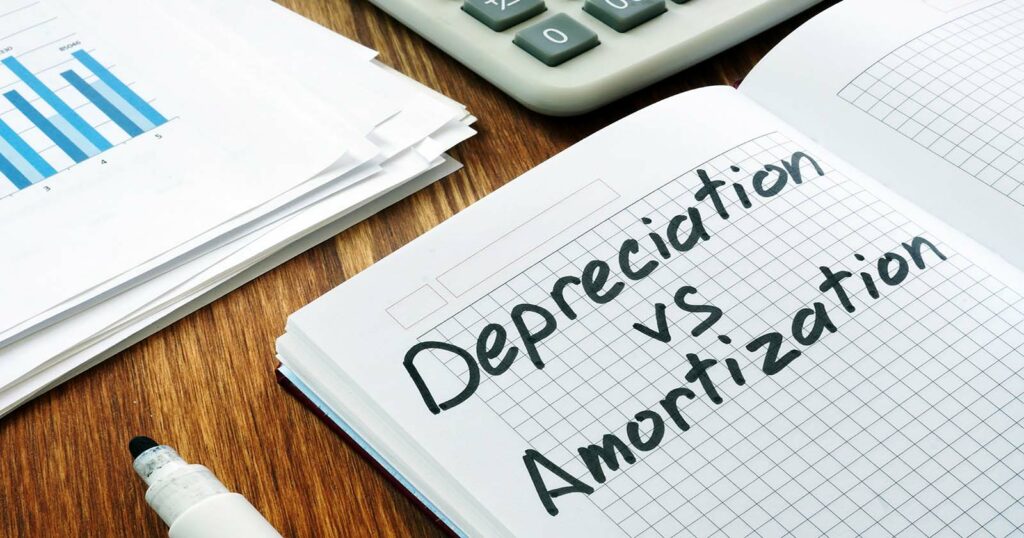Companies in all industries have assets and liabilities that need to be recorded at amortized cost. Whether that’s cash, accounts receivable, intangible assets, debts or accounts payable. Amortized costs in accounting are a must know. In this article, we will be exploring the definition of amortized costs along with all its different facets.

Amortized Costs: The Definition
Amortized costs can be applied to assets and liabilities. It’s essentially a way to measure the value of an asset or a liability based on its cost. Amortized costs measure assets or liabilities at initial cost adjusted by any amortization, premium or discounts, principal repayments, loss or impairment allowances.
Read More:
How to Calculate Depreciation Expense: Straight Line Method
When Are Amortized Costs Used
Depending on the type of asset or liability, there’s different ways of measuring them using amortized cost. We will go through some popular categories.
- Investments measured at amortized costs
Generally, investments that are held-for-maturity can be measured at amortized costs. Bonds are good examples of investments that are held-for-maturity. The measurement using amortized cost would be the cost of the investment adjusted by any premiums or discounts associated with the purchase using the effective interest rate method.
An investment is traded at a premium when it’s bought at a higher price than its original price (also known as par value). Investments at premium usually have higher interest rates (also called “coupon rates” for bonds) than current market interest rates for other investments. Investors will buy investments at a premium in order to get the higher yield.
On the contrary, an investment traded at discount means it’s bought at a lower price than its par value. It usually offers coupon rates lower than current market interest rates for other investments. The discount between the purchase price and the par value makes the investment worth it even if it offers a lower coupon rate than the market.
The effective interest rate method is simply accounting for the amortization of interest over the life of the instrument.
- Amortized costs in intangible assets
Amortized costs used in the context of intangible assets means the total accumulated amortization that was recorded for an asset and charged to expenses on the income statement over the course of the usage of the asset. Taking the initial acquisition cost of an asset minus the amortized costs on the asset will get you the net book value of an asset.
- Short term receivables and payables
Short term receivables and payables are measured at amortized cost using the effective interest rate. This means that receivables and payables will be measured at the amount from the invoice adjusted by any repayment and taking into consideration any amount that’s uncollectible or impairment. Usually, the short term receivables and payables are received or paid within the same financial period or no longer than 12 months after the end of a financial period. Therefore, we assume that there’s minimal impact from discounting these accounts using the effective interest rate. They are generally just kept at the amount as seen on the invoices.
- Loans
Loans are accounted for using the amortized costs. Similar to the investments held-at-maturity, when a company enters a loan obligation, it usually has a maturity date. As such, these loans are measured at amortized costs using the effective interest rate.
Read More:
Sum of Years (Depreciation Method with Example)
Amortized Costs vs Amortization

In long-term assets, amortized costs could be easily mistaken for amortization and vice versa. In reality, there’s a difference between the two. Amortization is related to the mechanism of deducting a portion of the cost of an asset to account for its usage over a time period. Amortization is recorded as an expense on the income statement. On the other hand, amortized costs represent the total aggregate amount that has already been deducted from the cost of an asset and recorded as expense over a time period.
Amortized Costs vs Fair Value
Amortized costs and fair value are two different ways of measuring assets and liabilities. There’s no direct correlation between the two. While amortized costs refers to an asset or liability recorded at cost adjusted by premium, discounts, amortization, principal repayments or loss and impairment, fair value is measuring an asset or liability using an estimation of its intrinsic value. An asset or a liability could have different values based on whether it has been valued using amortized costs or fair value.
Amortized Costs: Final Thoughts
Amortized costs is an omnipresent concept in accounting since it affects multiple accounts on the balance sheet. From investments to receivables and payables to only name a few. In a nutshell, amortized cost measures an asset or a liability using the initial cost, adjusted by any discount or premiums, amortization, principal repayments or any impairment losses. If you ever work in accounting, you will no doubt encounter amortized costs again so it’s a good topic to master.



